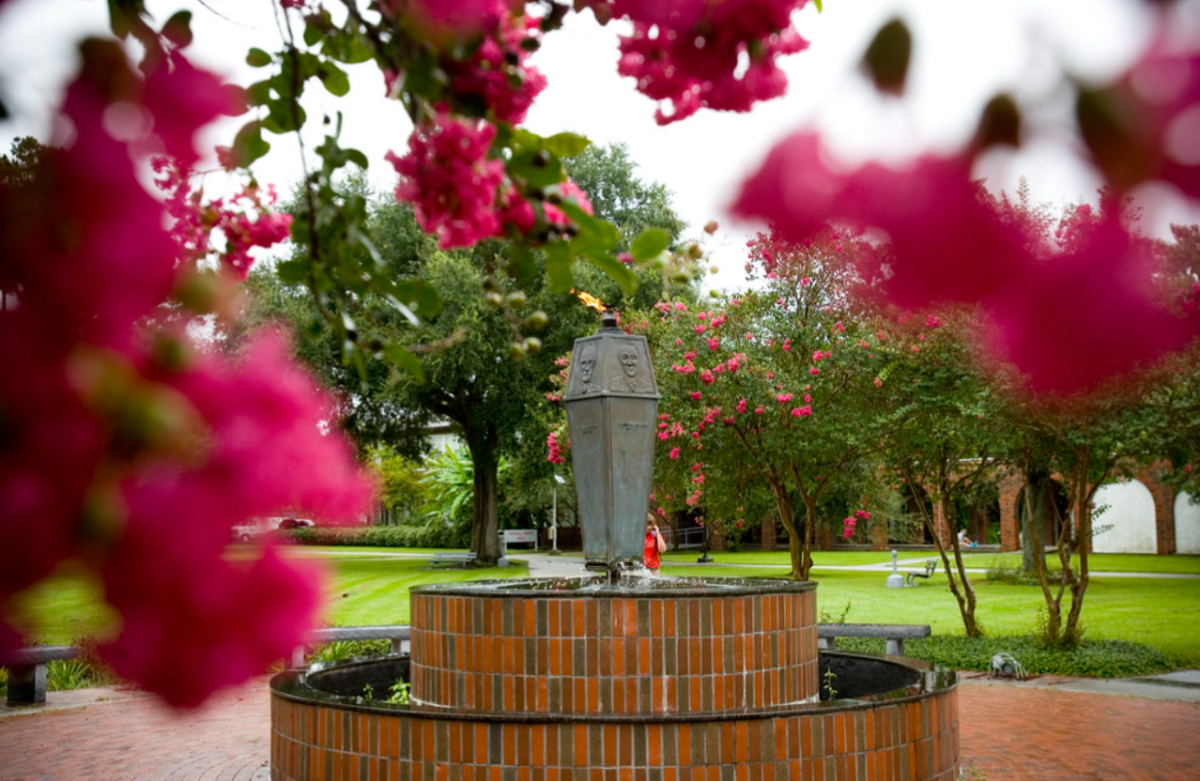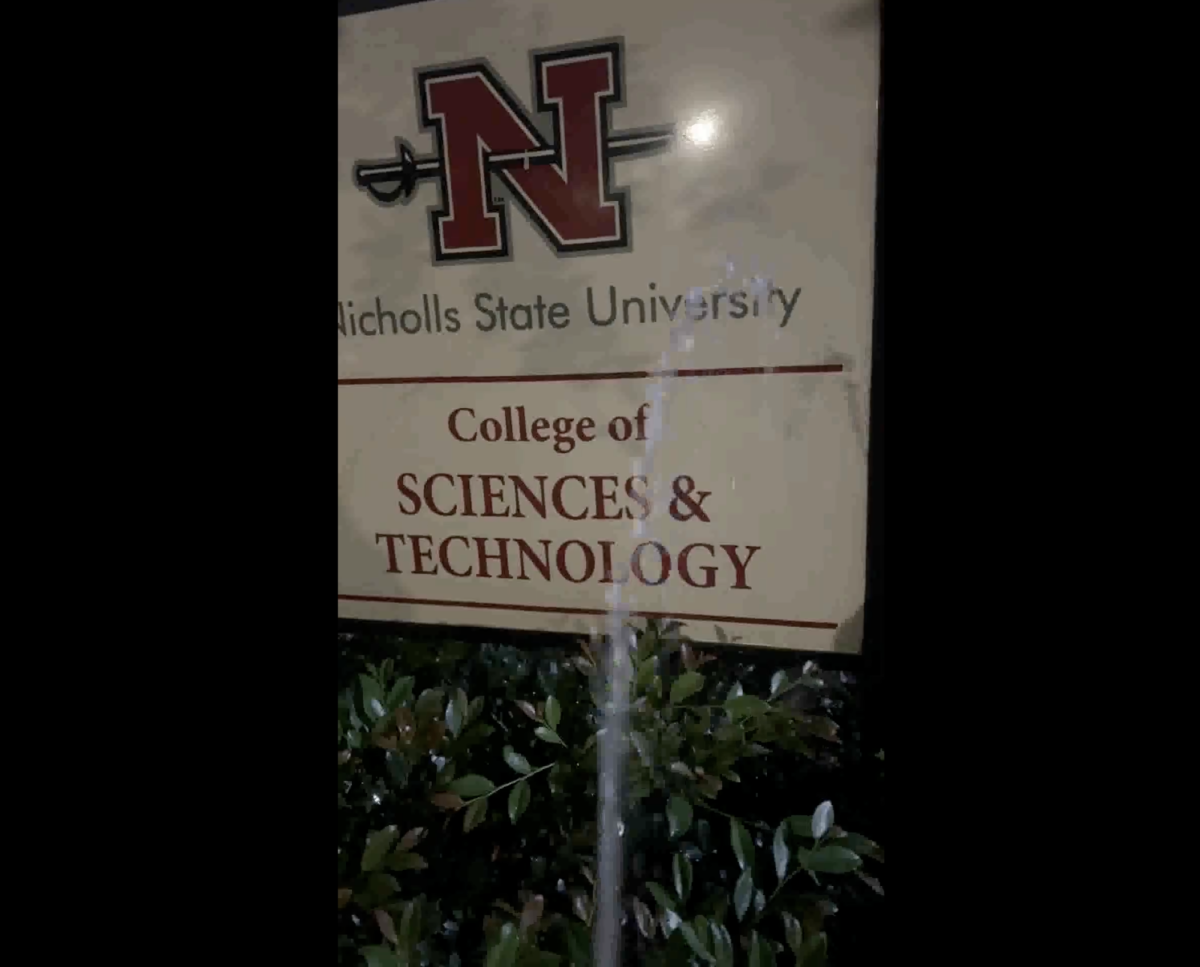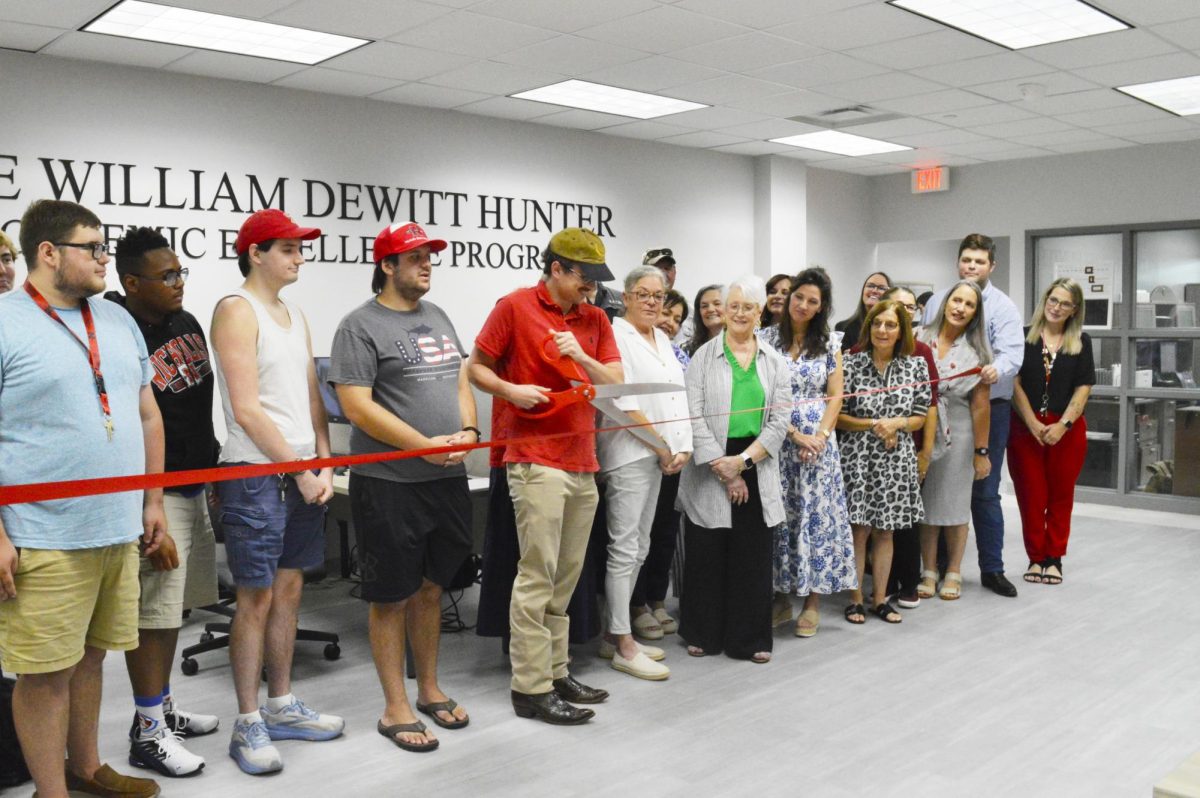Students, faculty and staff have been experiencing health problems due to what is believed to be mold growing in Gouaux Hall. The building suffered from extreme flooding which ruined floors and seeped through walls during Tropical Storm Allison.
“When it flooded, we went in immediately and pulled all of the carpet out. Then we went in to dry the building out as rapidly as possible,” Mike Davis, assistant vice president for business affairs for procurement and physical plant operations, said.
“We pumped up the air-conditioning, and we had air moving around. The whole key is the movement of air. We took what we thought were all the necessary steps to prevent the growth of mildew, and felt that we had done the proper things.”
Davis said there are many types of mold, and the University wants to make sure which it has and the proper measures needed to get rid of it.
The mold, which Dr. John Green, professor of biological sciences believes to be Stachybotrys Chartarum, has been causing problems for students, faculty and staff who work and learn in the building.
The main effects of that type of mold, as stated in the research Green provided, are respiratory problems, nasal and sinus congestion, burning eyes and fatigue.
“We thought we had taken care of anything that was going to contribute to the growth of mold, but apparently some developed anyway, and apparently water gathered in some areas that we were not aware of,” Davis said.
Green came to the building right after the flood, but did not return until July. He was astonished at what he saw.
“I look in and I see that the building has no carpet, so I opened the door and stepped into the building. I cannot describe the shock that I experienced when I walked into this building. The stench was unbelievable,” Green said.
He said he asked some people in the building if anything had been done, and they told him no.
“There was furniture in the hallways. I mean, it looked like crap,” he said.
Green attended the faculty institute in August, and the longer he was in the building, the more hoarse he became. He also began suffering from migraine headaches.
Green noticed they had cleaned out the auditorium, but when he went on Aug. 27 to teach classes, the room was not right.
“The floor in the front was still moist from moisture, and the stench of mold was stifling,” he said.
“It was obvious no one had done a damn thing.”
Green said after the first week of classes, he left every day barely able to talk, experiencing extreme fatigue, shortness of breath and often with a headache.
“It was obvious no one was doing anything, and I was not going to last the semester,” he said.
Green sent a letter to Davis Sept. 6 explaining that the environmental conditions were deplorable.
The letter states: “From my vantage point, I would estimate that at least 40 percent of the people who work in the building are being adversely affected by the current environmental conditions. Yesterday, I left the building early because of concern for my health, and I will continue to leave early until the situation improves.”
Green said no one in the building, even the maintenance people, was told anything.
“Although they may probably try to dump it on the maintenance people, but that is a lie. My concern is that if the University thinks that a fresh coat of paint and new carpet is going to make the building safe, it won’t. The problem lies behind the walls,” Green said.
Green sent copies of the letter to people in his department, his dean and the environmental safety office.
He said he received a phone call from Davis, who said he should not have sent the letter to those people.
“If you want my opinion, I could have sent it to Department of Environmental Quality, I should have sent it to the state department of health, the Environmental Protection Agency, the Centers for Disease Control and I could have sent it to the news media,” Green said.
When asked to comment on the conversation he had with Green, Davis said,” I have no comment on the personal conversation that may or may not have taken place. Anything that was said in a personal conversation is not an issue.”
Green said Davis told him “We’ve been so busy with the Saints and the Saints have occupied all of our time,” we he asked what was being done.
Davis said he has been informed that the mold is beginning to cause some problems. “I was notified while I was on vacation that there was a mold problem in the building. From there, I called people and told them to start moving in the building,” Davis said.
Davis said when he became aware of the problem, he initiated steps to minimize or eliminate the mold. Filters have been cleaned, and humidity testing has been conducted. The tests found high humidity levels in some areas, and corrections have been made in the air conditioning system.
“We have been attempting to obtain the services of an air quality expert to come down here and inspect the building, test it, tell us what we have and tell us what needs to be done to kill the mold,” he said.
Most students and faculty are aware of the mold’s presence in Gouaux Hall. However, they have not officially been told there is a problem in the building.
Dr. Alex Lasseigne, professor of biological sciences, said some students are becoming ill, and on one occasion a student went to the doctor to receive a shot. Another student went to Davis and complained. Davis told the student it would be taken care of, but it took three weeks for maintenance to act.
One student, who wished to remain anonymous, said he suffered from nosebleeds quite frequently.
Lasseigne said people in the building are putting up with allergy-type problems.
“I could tell after the flood that there was something in the air when I was teaching in there, because at that time, I was having a lot of allergy problems,” Lasseigne said.
Since then, Lasseigne said, students and other faculty members have started complaining.
“We think we have a mold problem. We want to make sure we have that mold problem. We want to know what we have, and we want to know what steps they recommend that we take to rid the building of any type of mold,” Davis said.
Right now, the University is waiting for the results of an air test performed Thursday, Oct. 18, by Duct Busters of Lafayette. After the results are in, the University will know exactly what steps need to be taken to fix the problem, he said.
“That is why none of the carpet has been installed. That is why it is sitting in the hallways, because we are waiting to see what we may have to do,” Davis said.
“We are prepared to do whatever we need to do in that building. I don’t want to take any steps that would either contribute to the problem or that are expensive steps that we did not have to spend that money to eliminate it in the first place.”
“So, we don’t consider this a minor problem. We don’t consider it something that we will wait until we get around to it. We consider it a serious problem and it has our attention, and it has been having our attention.”
Although the University is concerned with the problem, some faculty worry the situation is not considered a high priority.
“I don’t think it is first on their list. I think it is somewhere down the list and that it will eventually get looked at and taken care of, but it is not the highest priority, I don’t think,” Lasseigne said.
Although Davis does not know if the mold is particularly harmful, he does know any type of mold, if left unattended, could form into something dangerous. He also said it is a premature decision to shut down the building until the mold problem is fixed.
The sa
fety director on campus has been notified, but he is on medical leave, Davis said.
“Whether he was here or not here, the steps that we have taken are all the same steps that he would have advised us to do,” he said.
Davis said it is premature to jump to any conclusions at this point and that the University considers it a serious matter to hire a professional consultant to look at the problem.
“We have been taking some steps, since Labor Day, to keep the air moving around in that building and to reduce the humidity to try to eliminate the type of atmosphere that would promote the growth of any type of mold or mildew,” he said.







